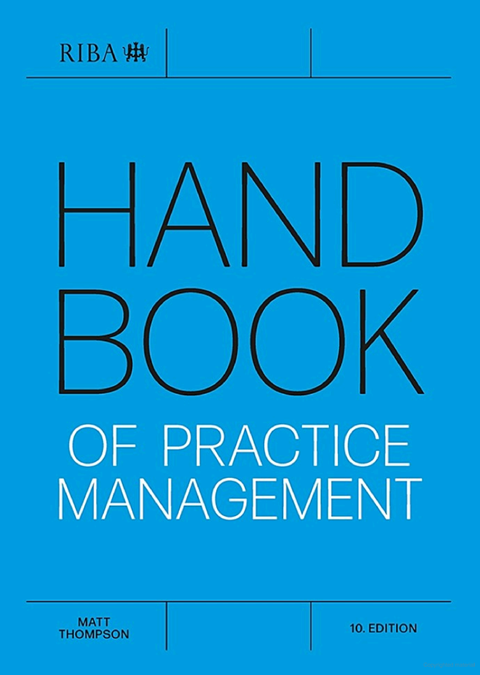Chris Bryant explores the latest edition of the RIBA Handbook and finds it a valuable resource for both seasoned architects and Part 3 students

The RIBA’s latest Handbook of Practice Management is the 10th edition of the long-running guide. First published in 1965, the series has evolved to reflect the changing landscape of architectural practice, from the advent of the internet to the complexities of modern business and ever-increasing legislation.
The 7th edition from 2002, when I first went to study architecture, tentatively touches on email and gives one page to discuss the internet while providing comprehensive advice on how to write the perfect letter. It includes fleeting reference to one ISO standard, whereas detailed reference to seven ISOs is provided in the latest edition.
Comparing the two is a stark reminder of the increasingly complex environment we work within – and that’s without even delving into procurement! The latest edition, written by Matt Thompson, is comprehensive and insightful, and does well to navigate the intersecting strands of running a practice.
One of the handbook’s strengths is its ability to contextualise practical advice within the broader framework of business and construction. While earlier editions tended to focus on the day-to-day operations of a practice, the latest iteration is more focused on context, strategy, and principles. This shift reflects the current state of the architectural profession and is a welcome development. The handbook’s comprehensive referencing and attention to policy and legislation make it a valuable resource for practices of all sizes, as well as essential reading for any part 3 student. It is the sort of book that is good to have near you, which you might idly flick through and spark an idea or trigger a memory.
It can be easy to ignore what a feat a book like this is and the pressure that comes with writing it. This is, after all, not any guide to running a practice but the ‘Royal Institute of British Architects’ one, and that carries a level of expectation. Generally, it delivers.
Thompson’s writing style is clear, concise, and thorough. The book is divided into chapters and sections that are easy to navigate, and each paragraph makes a succinct point. The use of worked financial examples and RIBA business benchmark data adds depth and credibility to the text. The section on EDI by Carys Rowlands is particularly noteworthy, providing clear and actionable advice.
Despite some minor shortcomings, the RIBA Handbook on Practice Management remains a very useful resource for architects and part 3 students
While the handbook generally strikes the right balance between detail and overview, there are occasional instances where the level of specificity may seem excessive. For example, is it really the right place to discuss the pros and cons of laptops versus desktop PCs or how to set out graphics? Probably not, but the questions of what to put in and what to leave out must have been exhausting, and generally the right level is found.
My strongest criticism of the handbook is its ‘RIBA-ness’. Strong on policy and legislation but a bit lacklustre on verve and fun. The handbook deals admirably with policy, legislation, and operational matters, but the sections on less prosaic endeavours such as marketing, branding, and collaboration could benefit from a more creative and engaging approach. A few anecdotes or examples could help to bring the text to life and celebrate the enjoyable and creative aspects of building a practice. The graphics are, as you would expect, heavily on brand with RIBA-type things, which tend to be crisp but rather dull and unengaging. A few more tables (when comparing) and the odd infographic wouldn’t go amiss. That would help not only to break the text up but to provide visual reminders, which would lodge in the hippocampus a bit more easily.
The question I always have with these types of books, which are essentially overviews with useful references, is whether it would be better to simply access this information online, allowing for quicker searching and sharing, and where information can be updated more readily without the printing costs. I’d certainly welcome a web-based format, but I would also keep my physical copy for those idle moments of browsing.
Despite some minor shortcomings, the RIBA Handbook on Practice Management remains a very useful resource for architects and Part 3 students. It is a well-written, thorough, and intelligently structured guide. Yes, it could be a bit more engaging, but it does what it set out to do very well, and that’s a testament to a skilled author and a highly knowledgeable steering group.
Postscript
The RIBA Handbook of Practice Management (10th Edition) by Matt Thompson is published by RIBA Publishing.
Chris Bryant is a founding director of alma-nac.
















No comments yet